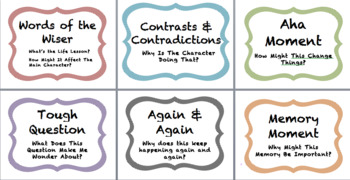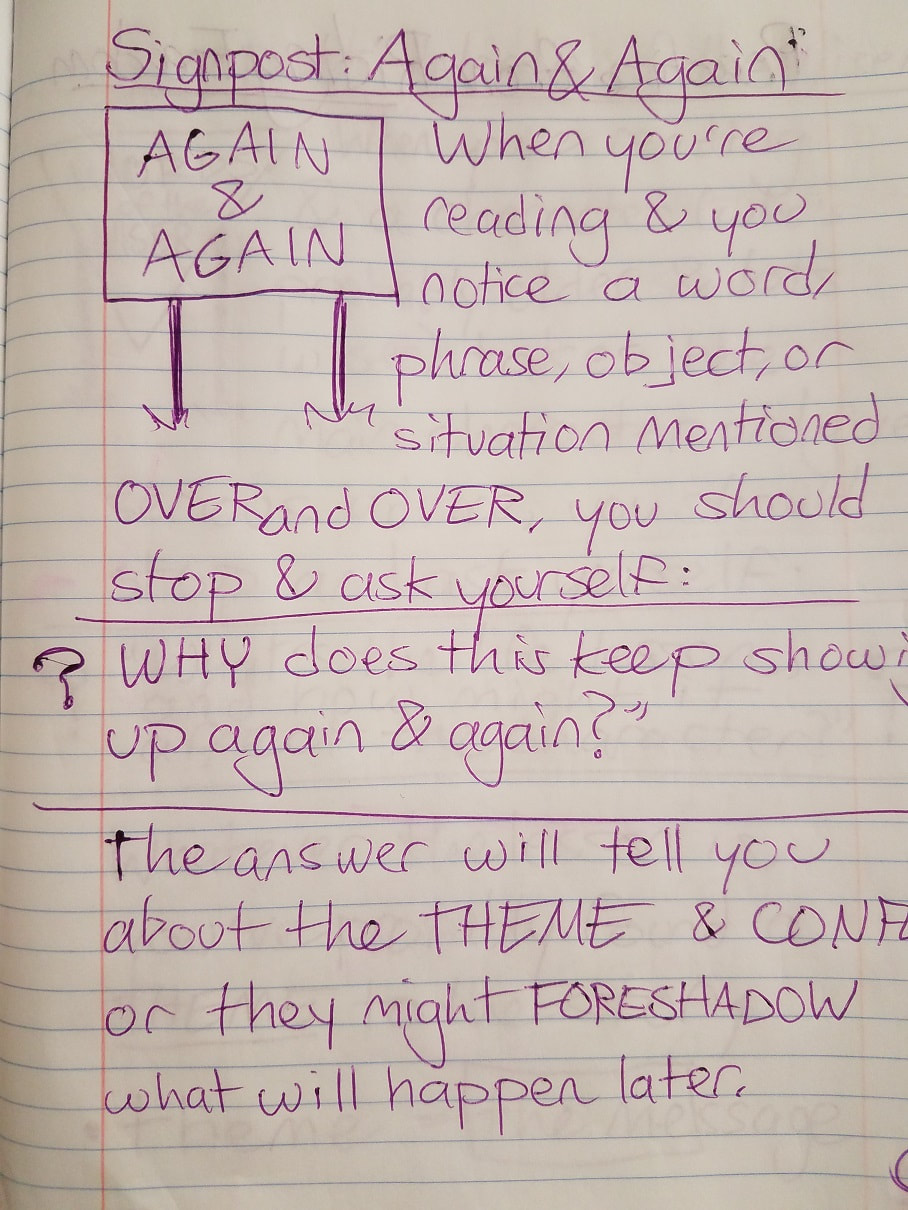
This signpost inspires children to explore fantasy and science fiction stories and to let reading take them on a journey.

Each signpost has its own notes sheet: - Tough Questions - Again & Again - Words of the Wiser - Memory Mom.

These notes would be a great way to introduce the topic to your students. that occurs repeatedly (motif), and for a specific or significant reason. If youre on the lookout for fun display resources for a reading corner in your classroom, one of the imaginative reading displays we have made is this signpost to beloved story worlds. Notice & Note Signposts are engaging reading tools that send students on a scavenger hunt through a text to make deeper meaning. An important life lesson is shared with the main character.The author interrupts the flow of the story by letting the character remember something (this is not a FLASHBACK as there is no shift in time!).The character asks himself/herself or a trusted friend a tough question(s) that reveal(s) concerns (internal conflict) the character is dealing with.Signposting can happen in your introduction and throughout your whole essay. They suggest what will happen, constantly remind them of where they are at key points along the way, and indicate the direction your essay is going to head next. The character realizes something or comes to understand something that therefore changes his/her way of thinking. Signposts help to guide the reader through this and helps them read from the writer’s perspective.In the book Notice & Note: Strategies for Close Reading, Kylene Beers and Robert E Probst identify additional text features, signposts, that help students read literary texts with deeper understanding. To how he/she has acted, that contrasts with how we (the average reader) would act, or that reveals a Traditionally we teach students about text features such as the importance of titles, characters' names, setting, and the opening lines. The character acts in a way that is contradictory.The Sign Post strategies ask you to take moments in your reading to stop, think, notice, and note when the following events occur. Instead of answering specific questions about each individual text, Sign Post Analysis asks you, the reader, to ask structured questions about the text in your own way, and to come to your own conclusions! He signed in at the hotel when he arrived.The Sign Post reading strategies are a tool we use through ELA and English to help us consider different texts in a similar way. To record one's arrival or departure by writing one's name. The log is designed to help your students stop and jot as they read, noticing and analyzing the nonfiction signposts.


This flip book can be used for any novel, book, or passage.It comes in a variety of versions: a color cover version or a black & white cover version, a black and white version of the flip pages that students can enjoy coloring, or a colorized tab version of the flip pages for each signpost.How to use. The Notice and Note Signposts Nonfiction Reading Log is based off of the book, Reading Nonfiction: Signposts and Questions, written by Kylene Beers and Robert E. 'Eleven' by Sandra Cisneros - Contrasts & Contradictions reading Signposts and element of Conflict. Within each story, we will examine a reading Signpost and a fiction literary element. Copyright 2005, 1997, 1991 by Random House, Inc. Notice & Note Signposts are a great way for students to get deeper into their reading. Signpost Maths introduces maths to students in Foundation to Year 6 with an emphasis on spiralled learning and spaced practice. We will begin the year by close reading six thought provoking short stories that appeal to all 6th graders. You have only eight seconds to capture the reader’s attention. Here are six tips to keep in mind when using signposting words, to help you write an essay that stands out. Random House Kernerman Webster's College Dictionary, © 2010 K Dictionaries Ltd. Signposting the structure of your essay strengthens the presentation of your argument, especially when used in the introduction.


 0 kommentar(er)
0 kommentar(er)
